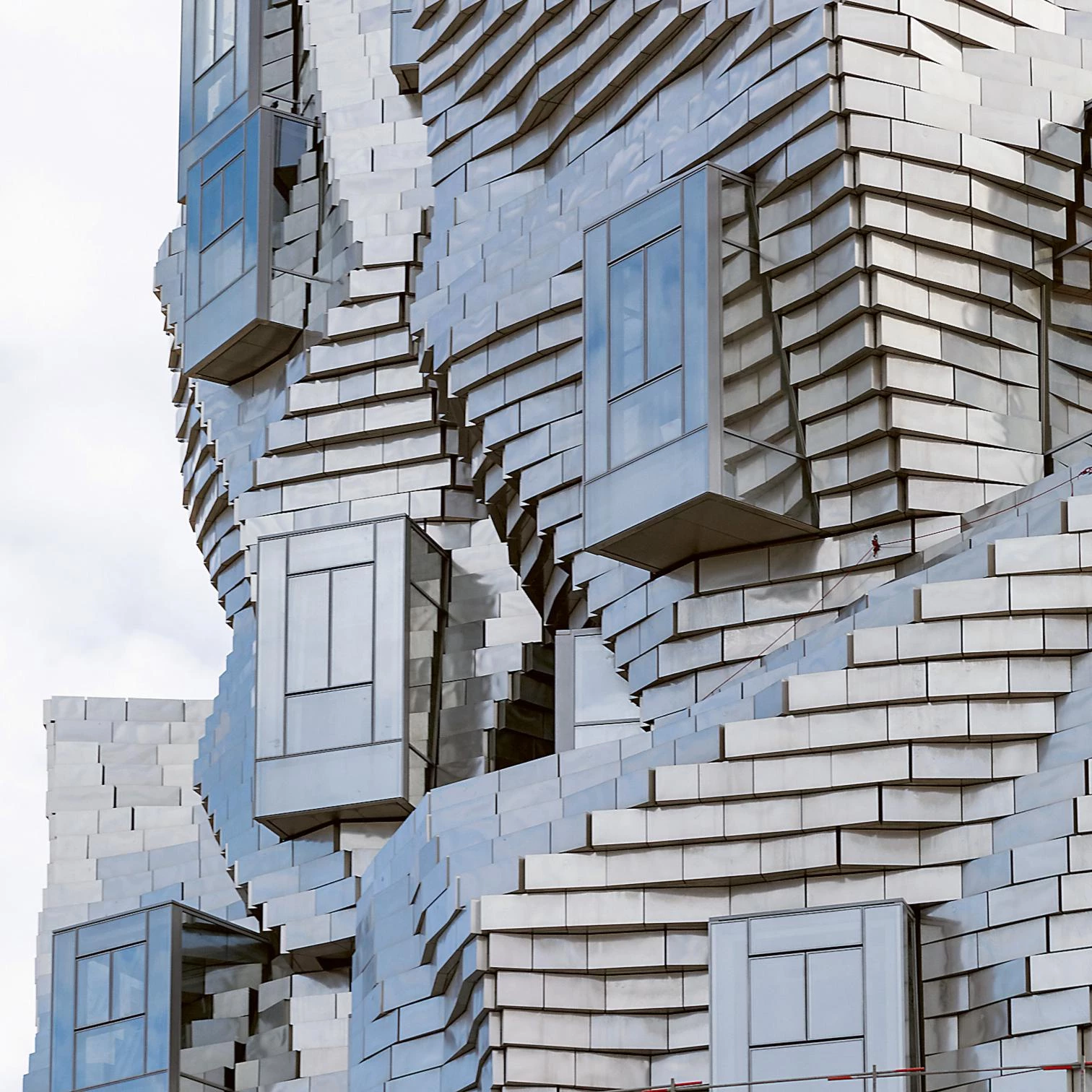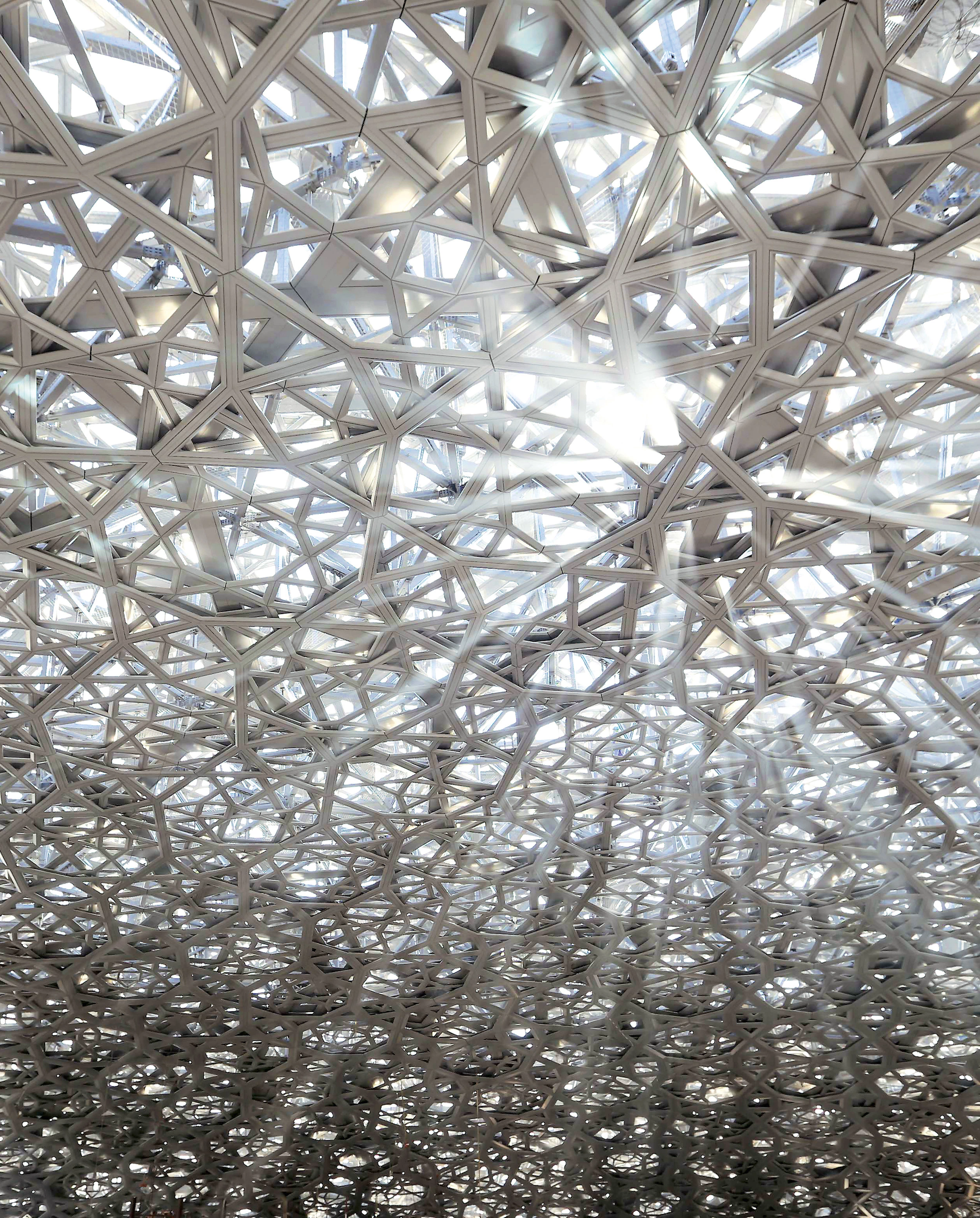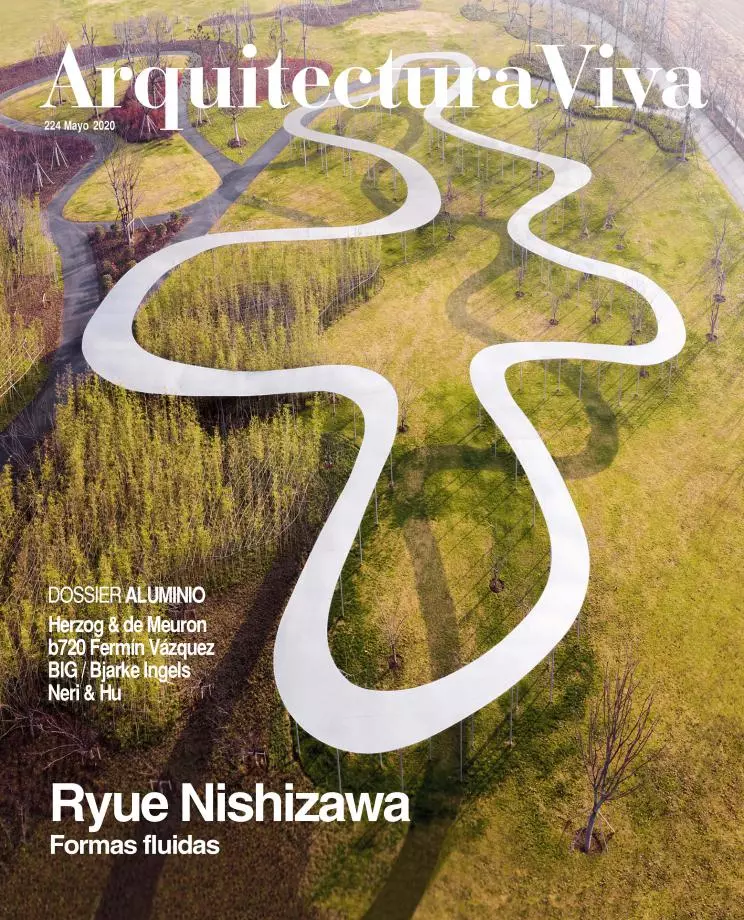New Aluminum Envelopes
Original Sin

Frank Gehry, Luma Tower en Arles (Francia)
Aluminum is a complex material whose many virtues do not quite compensate for all its defects. Among its strengths is the capacity to take on a wide diversity of forms, colors, and finishes, and the fact that it lends itself to mechanization in nearly all possible ways. We can add to this its lightness, its mechanical resistance, and the durability that comes from its negligible tendency to corrode (see Arquitectura Viva 194).
As for disadvantages, the principal flaw of aluminum lies in how it originates, and here it quite assumes the stature of an ‘original sin’: the enormous amount of energy expended in the course of its synthesis, as obtainment of the material requires first extracting alumina from bauxite, then extracting the aluminum through a burdensome process of electrolysis. Suffice it to think that the Alcoa plant in A Coruña, which is under threat of closure, on its own produces 2% of the total aluminum consumed in Spain as a whole, that is, almost the same as Galicia. Also, bauxite is far from being an abundant material in Europe: it has to be brought in from remote territories like Australia, China, Brazil, and Guinea-Conakry, with the additional energy expenditure and carbon dioxide production that takes place during transport. To mitigate this ‘original sin,’ producers allege that aluminum can be recycled completely and as many times as is necessary, with an energy cost much lower than that incurred in production, and have created certificates vouching for the more or less sustainable origin of the material.
Aluminum continues to get bad press, but this has not prevented it from becoming a hegemonic material in architecture today. It is hegemonic especially in facades defined in full detail by catalogs of components – window and door frames but also panels and louvers – that make it possible to dry-mount a broad range of architectural enclosures, and with the guarantee of very good thermal and mechanical properties.
Arquitectura Viva presents this reality through four works where aluminum plays a central role, all of them designed by internationally operating firms. First, the Meret Oppenheim Tower in Basel (Switzerland) by Herzog & de Meuron is a powerful block wrapped in aluminum-plated sandwich panels and shutters that reinterpret traditional openings. The Kistefos Museum in Jevnaker (Norway) by BIG creates the double-curvature of its facade by means of very slender aluminum profiles. The new Lycée Français building in Barcelona by b720 is covered with aluminum panels of different colors to create an interesting visual rhythm. And, finally, the Junshan Cultural Center in Beijing (China) by Neri & Hu comprises two volumes unified by an enclosure of deep aluminum louvers presenting an ocher-toned finish.






